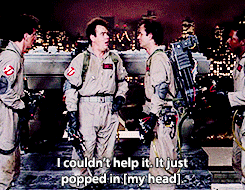Setting is something I struggle to write. Not the nuts and bolts of description, but the actual setting of a story. There are so many little things in the real world that bring it to life, and it’s damnably hard to capture those in a novel. Some authors are excellent at it, and I’ve come to believe (more and more) that an inspired setting equals a better book.
There are several basic ways to approach settings. To some extent, all fictional settings are fantastical extrapolation. Historical fiction tends to be less so, and sci-fi and epic fantasy can have entirely fabricated settings. It’s a spectrum of how much or little the author cares to extrapolate or invent or blend the real world into their setting. At some point, though, setting has to be based on something real, whether it be a scientific idea or historical facts.

I’m currently working my way through the Long Earth series that’s authored jointly by Steven Baxter and Terry Pratchett (RIP). The premise is that humans learn how to ‘step’ between an infinite number of multiverses (Earths, in the first several novels), and the books deal with how this changes the various human societies. The first book is an adventure travelogue, which is a decent stand alone if you decide you don’t want to read the remainder of the series. Both Pratchett and Baxter have this knack of taking scientific and fantastical concepts and creating settings that drive the story forward. (Note: this series feels more in line with Baxter’s work than Pratchett’s, which is understandable.) In The Long Earth, the plot is the setting. The idea of an infinite number of worlds drives everything forward, and there could’ve been a different character per chapter, and it would’ve worked. The thing is, I didn’t necessarily care for the characters in The Long Earth. This is something a friend mentioned about the novel: they didn’t like the characters.
And yet, they finished the novel and loved it.
That seems to dash against the character-centered storytelling wisdom that gets passed around. That doesn’t mean that the characters in The Long Earth series are poorly written characters or that they don’t do the things characters are supposed to do in a novel. They have goals and passions; they’re well-rounded people, but they’re not the main draw of the novel. They don’t drive the plot. The setting does.
Yes, you can cheat and say that the setting is a character, but it’s not. (I loved Lost, but ‘the island is a character’ schlock that got thrown around there was equally idiotic.) There are fundamentally different ways a setting and a character are portrayed. A setting doesn’t have hobbies or interests or desires. A setting just is. Characters can’t reason with a setting (most of the time…), and that’s a source of conflict. Characters can reason with other characters (again, most of the time…), which is also conflict, but they’re different. A setting conflict is man verses nature, which makes the story different than man verses man. There are usually elements of both in a story, and that’s certainly true of The Long Earth, but a major focus of the novel is the man verses nature aspect, and the man verses man plots kind of dragged the story down for me.
I love backpacking. There’s something implacable about the natural world that humbles and challenges you. That’s different than how you deal with difficult people in your life. The setting matters. It’s not arbitrary, and if you’re writing fantasy, that’s doubly so. I’ll save my geography and fantasy map rants for another day, but you can have a very small geographic area as your setting and make it feel huge if you understand the realities of a complex setting.

The picture above is my all time favorite hiking photo (my boyfriend took it because he has a better eye for composition than I’ll ever have). Every time I look at it, I feel what it was like to eat lunch in that meadow. I remember the glacial waterfall that’s out of scene. I know how close we were to crossing a mountain pass. The were realities of that moment–exhaustion, relaxation, and wonder–that compose the basis of why I love to go into the outdoors. That picture is like a good setting: it takes something real and turns it into something fantastical.
Ultimately, setting is mood. Adding a character can’t change the entire tone of a novel the way swapping the setting can. This is why things get set IN SPACE. The tone is changed, old is new, and a heightened level of conflict and interest is found.









